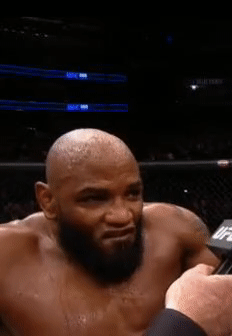- Joined
- Mar 27, 2016
- Messages
- 1,416
- Reaction score
- 324
I wanted to construct a model that determines the win probability of a fighter based his age and the age of his opponent.
In general, I wanted a model to determine the probability of an event (in this case a fight outcome) as a function of one input variable (in this case age advantage).
The function that I constructed is

The sensitivity constant, k, measures how much the event probability is affected by the input variable.
k and x must be defined to be positive.
How to Measure the Age Advantage
I measured a fighter's age advantage as the difference between his opponent's age and the prime fighting age minus the difference between the fighter's age and the prime fighting age.

The challenge was to determine the prime fighting age. The key lay in the sensitivity constant, k.
An ill-defined or irrelevant input variable should have no correlation with win probability and should therefore cause the sensitivity constant to be estimated at zero, indicating a weak correlation.
The ideally chosen prime age, however, would yield realistic values for the age advantage, causing the input variable to strongly forecast win probability. This would maximize the sensitivity constant.
The prime age that maximized k was 27.5, yielding a maximal sensitivity value of 0.2327.

Finally, having determined these parameters, the win probability of a fighter as a function of his age advantage is given by

Notes:
1. This model only works for positive values of the input variable. However, it can be modified to allow for negative values using absolute value operators.
2. There were some simplistic underlying assumptions in this model (like the linearity of the age advantage). It may be improved by modifying the definition of the input variable.
3. Moreover, the model may be vastly improved by being modified to allow for the input of several variables if possible.
Example:
Fighters Daniel Cormier and Jon Jones are scheduled to fight each other on July 29 of 2017.
At the date of the bout, Jon will be approximately 30 years old and Daniel will be approximately 38.
The probability of Jon's victory (accounting only for age of course) may be calculated as such:

TLDR
The prime fighting age is 27.5 years old.
In general, I wanted a model to determine the probability of an event (in this case a fight outcome) as a function of one input variable (in this case age advantage).
The function that I constructed is

The sensitivity constant, k, measures how much the event probability is affected by the input variable.
k and x must be defined to be positive.
How to Measure the Age Advantage
I measured a fighter's age advantage as the difference between his opponent's age and the prime fighting age minus the difference between the fighter's age and the prime fighting age.

The challenge was to determine the prime fighting age. The key lay in the sensitivity constant, k.
An ill-defined or irrelevant input variable should have no correlation with win probability and should therefore cause the sensitivity constant to be estimated at zero, indicating a weak correlation.
The ideally chosen prime age, however, would yield realistic values for the age advantage, causing the input variable to strongly forecast win probability. This would maximize the sensitivity constant.
The prime age that maximized k was 27.5, yielding a maximal sensitivity value of 0.2327.

Finally, having determined these parameters, the win probability of a fighter as a function of his age advantage is given by

Notes:
1. This model only works for positive values of the input variable. However, it can be modified to allow for negative values using absolute value operators.
2. There were some simplistic underlying assumptions in this model (like the linearity of the age advantage). It may be improved by modifying the definition of the input variable.
3. Moreover, the model may be vastly improved by being modified to allow for the input of several variables if possible.
Example:
Fighters Daniel Cormier and Jon Jones are scheduled to fight each other on July 29 of 2017.
At the date of the bout, Jon will be approximately 30 years old and Daniel will be approximately 38.
The probability of Jon's victory (accounting only for age of course) may be calculated as such:

TLDR
The prime fighting age is 27.5 years old.
Last edited:







